AFTER THE FIRST SESSION, SEPTEMBER 2021
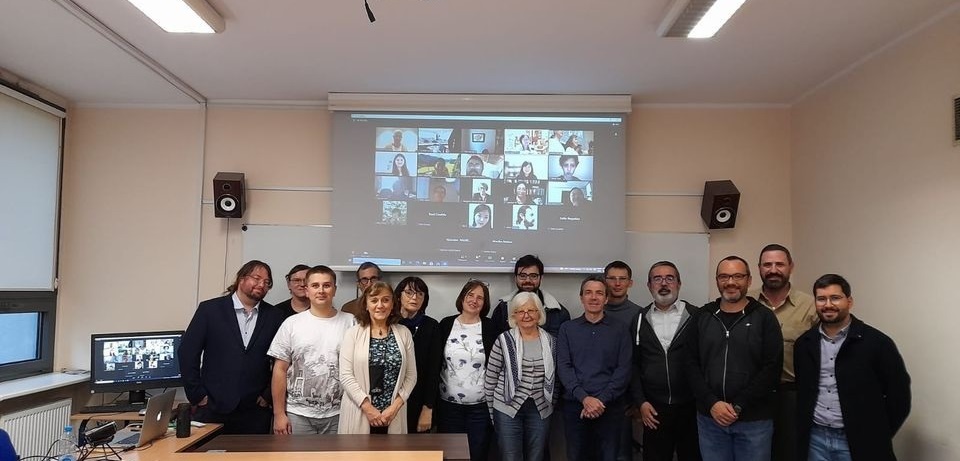
In the photo: Both groups, on-site students in the Institute of Ethnolinguistics at AMU with remote students visible on screen
A NEW FORMAT FOR INTERLINGUISTIC STUDIES AT AMU (THE 2021-2024 GROUP)
The three-year post-diploma studies in interlinguistics which helps form professional esperantologists and interlinguists has begun for the eighth time. These studies also feature the only university level training for Esperanto instructors. This time, due to the ongoing pandemic, the first session took place in a hybrid format in the period September 21-25. Before the weeklong meeting next semester, there will also be two weekend meetings using remote instruction. These will make it possible to invite outstanding lecturers, engage in wide-ranging discussion over the subjects covered in the course and to carry out some exercises.
The current group is exceptional both for its size and multi-national nature with 41 students from 21 countries. An interesting and great honor for the Studies is that one member of the new group of students, Margaret Zaleski-Zamenhof, is the great-granddaughter of Ludwik Zamenhof, the author of Esperanto. Twenty students come from nine countries outside Europe (Brazil, Chile, China, Cuba, Indonesia, Iran, Pakistan, South Korea and Vietnam). This creates an exceptional base for intercultural and interlanguage comparisons through Esperanto and this began during the courses on Esperanto Culture and Phonetics. The first of these courses was conducted by Ilona Koutny, who presented the vast range of culture, from works of art to everyday culture, from daily reality to ways of thinking. Course participants discovered the cultural connection of languages together on the basis of examples from their own languages. There were also sections devoted to Esperanto radio with the renowned professional Barbara Pietrzak and to Esperanto theater with François Lo Jacomo (Fr), himself once an actor. José Antonio Vergara (Chile), previous president of ISAE (International Scientific Association of Esperanto) spoke briefly on the use of Esperanto in sciences.
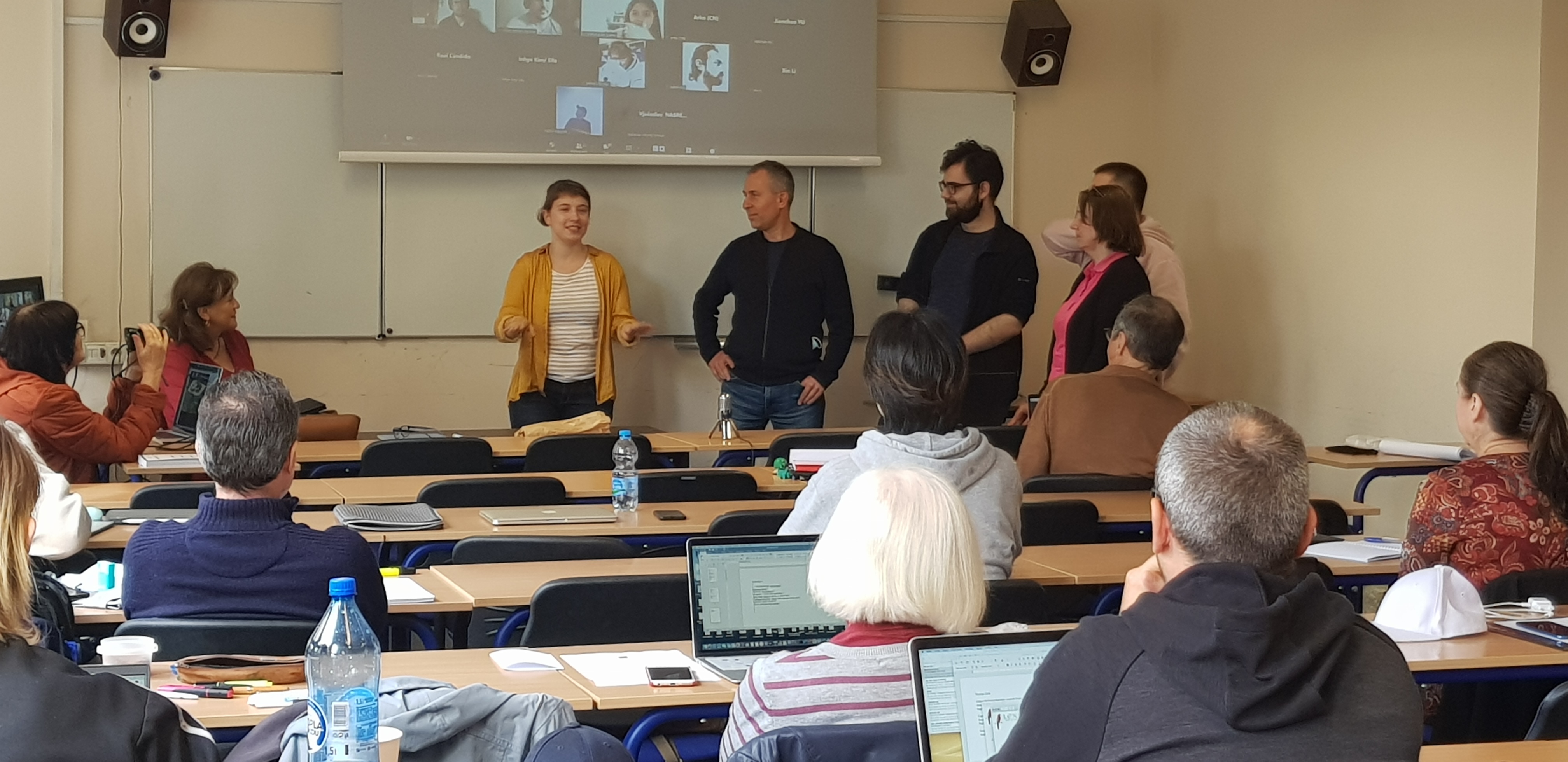
In the photo: Examples of non-verbal communication during the lecture by prof. Ilona Koutny
The course on phonetics, conducted by Nicolau Dols from the University of the Balearic Islands, illuminated the world of speech sounds, the manner in which people speak as well as specific features of Esperanto and ways of analyzing them. Communication can occur in spoken or written form, at present often electronically, and also through non-verbal means. Participants from different countries were able to give examples of non-verbal communication during the course given by Ilona Koutny. The first period of Esperanto literature, an important part of Esperanto culture, was analyzed in a remote lecture given by Tomasz Chmielik.
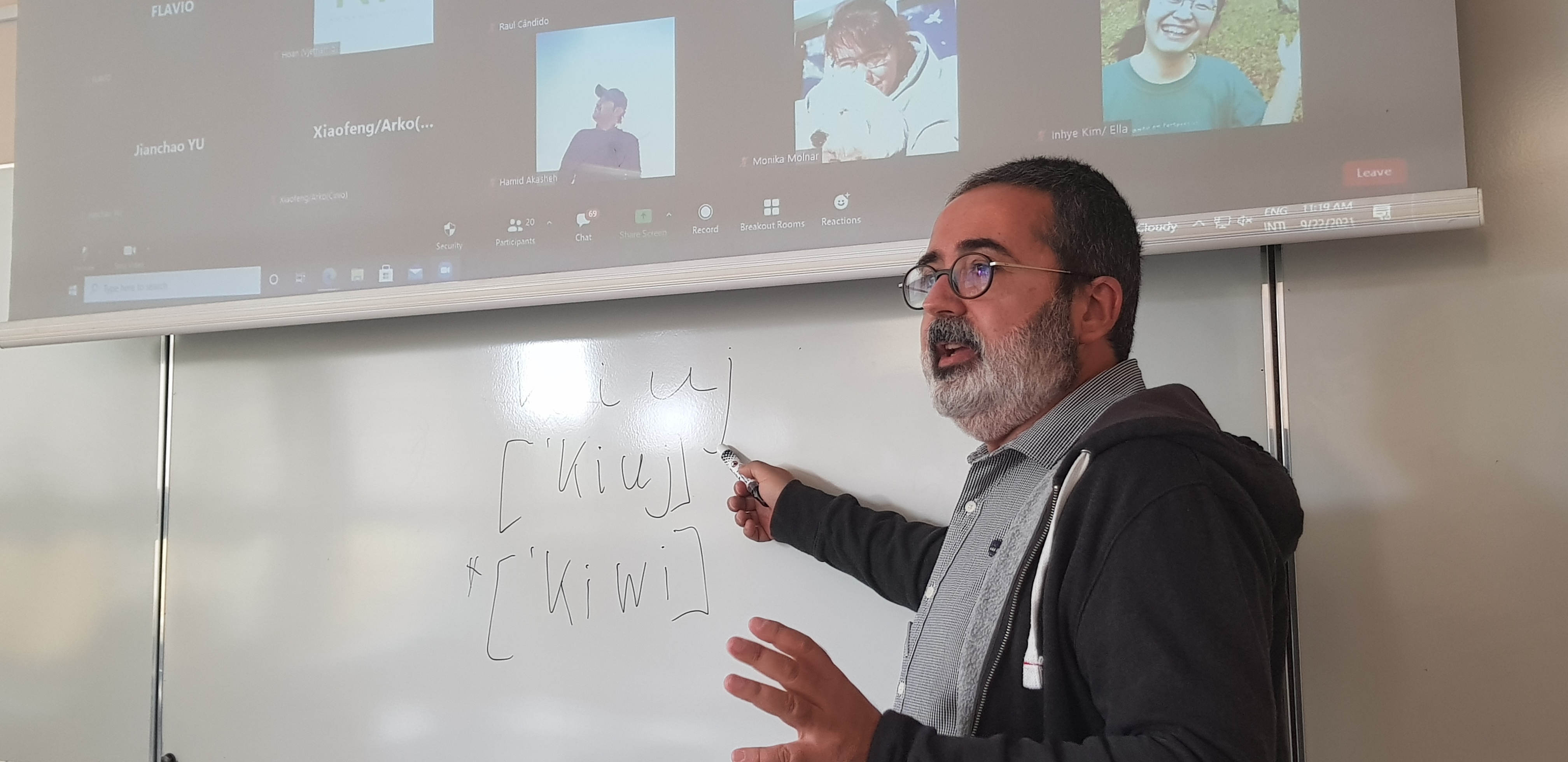
In the photo: Lecture by prof. Nicolau Dols
During the opening ceremony, Rafał Witkowski, Vice-Rector for International Cooperation, greeted the students warmly. The Dean of the Faculty of Modern Languages and Literatures, Krzysztof Stroński, received Prof. Nicolau Dols and the director of Interlinguistic Studies. They spoke about the future of the program. The director of the Institute of Ethnolinguistics highly appraised the 23-year progress of the Studies.
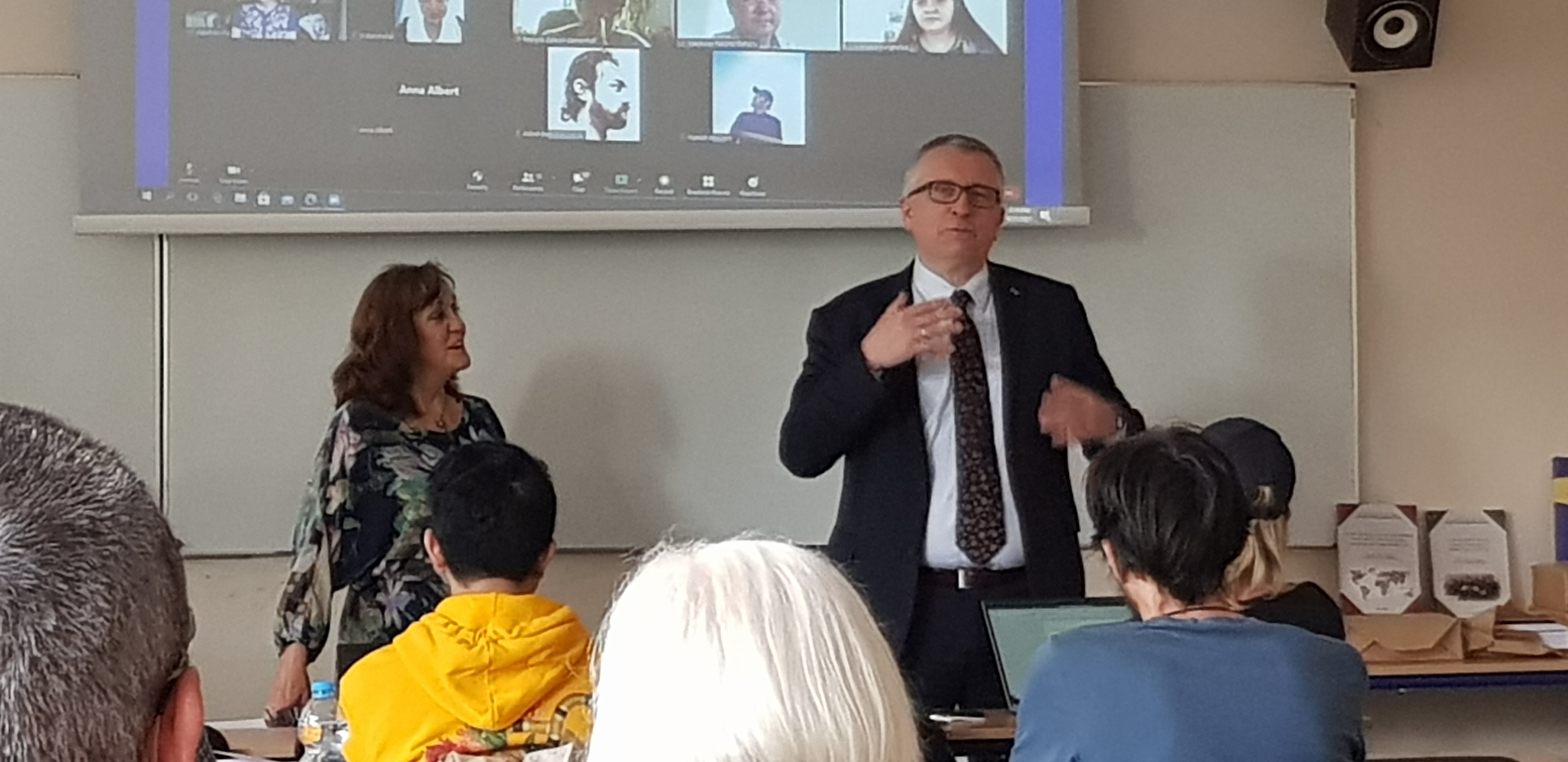
In the photo: Prof. Rafał Witkowski, Vice-Rector for International Cooperation, and prof. Ilona Koutny, the Director of the Studies
The hybrid format of the study session worked thanks to the technical expertise of Katalin Kováts. The system she constructed and managed locally made it possible to bring both on-site and remote students together. Both groups could see and hear the lecturers and each other, follow the visual elements of the lecturers, ask questions, and actively contribute to the discussions. The proceedings were recorded in order to make sure that those students unable to participate in real time due to time zone differences will be able to watch the lessons in the coming weeks.
The pleasant evenings that participants spent together were crowned by the traditional komuna vespero (common evening) with film contributions by remote learners, local esperantists and the singer Zuza Kornicka. The traditional miela vespero (honey evening) of Arkones (esperantic cultural festival in Poznan) took place this year during this meeting.
Study materials and assignments will be available in the educational portal edukado.net, where there is an online study space for the students. 15 students would not be able to participate without the monetary support of the Esperantic Studies Foundation. The fund, based in the US, regularly helps the studies through fellowships ESF - AMU Poznanon.
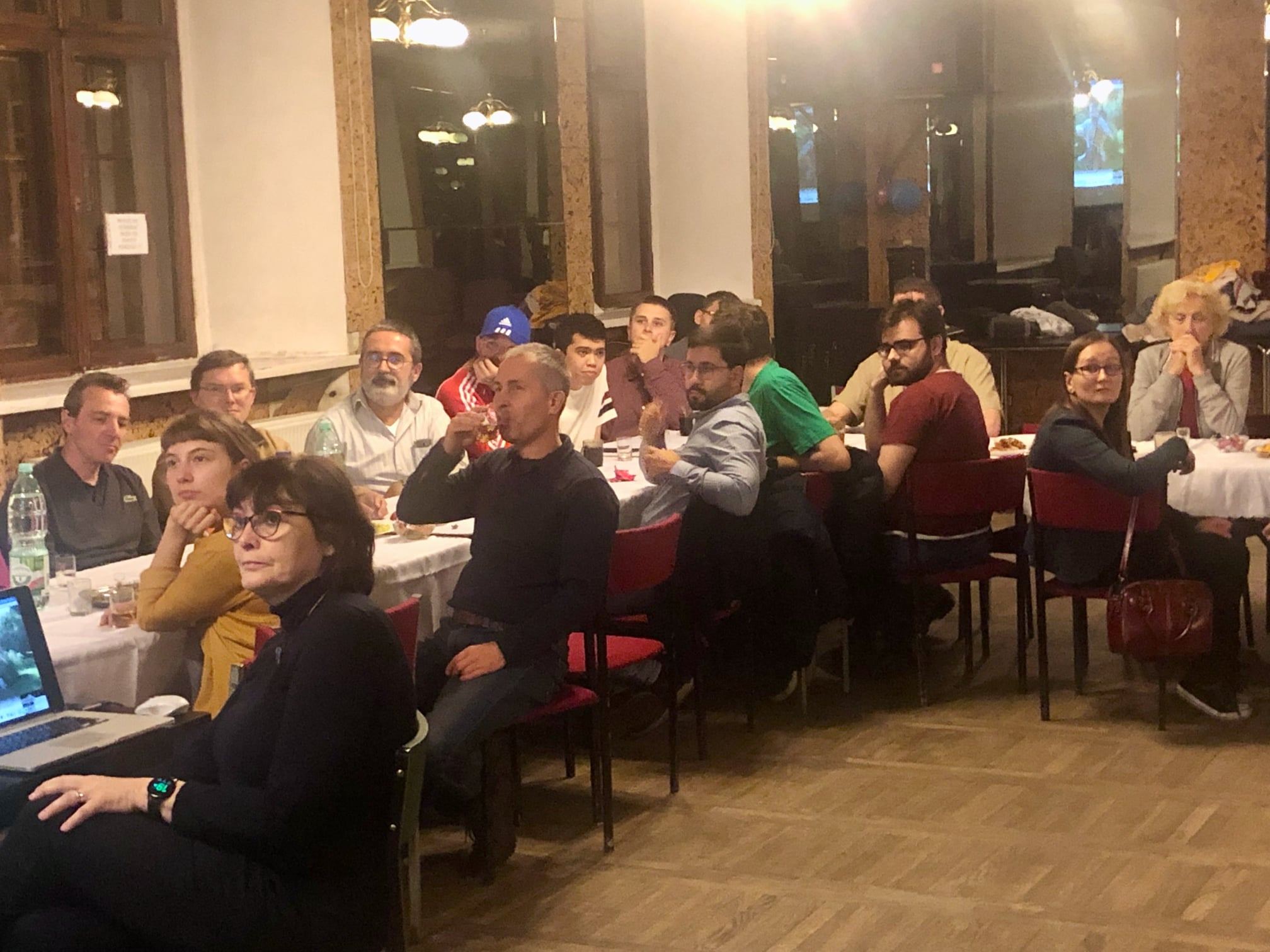
In the photo: During the komuna vespero (common evening): attendees watch a video of an art presentation given by a remote student.
Reported by: Ilona Koutny and Katalin Kováts
Interlingvistikaj Studoj

